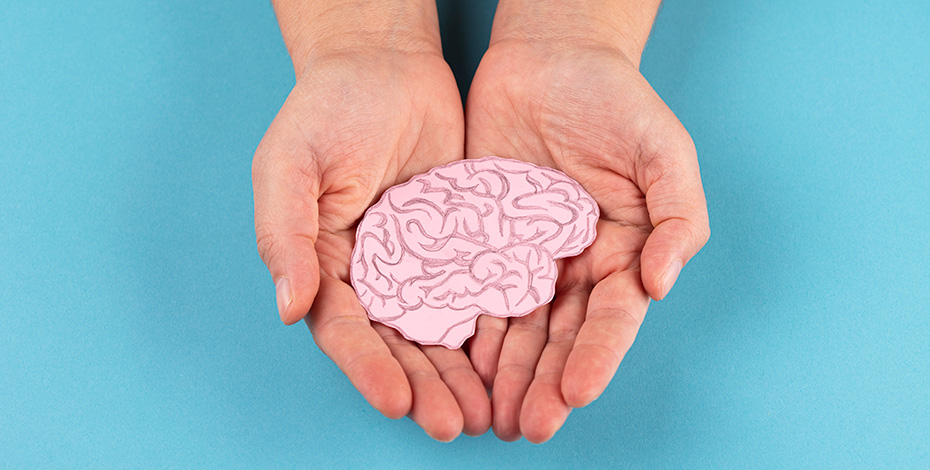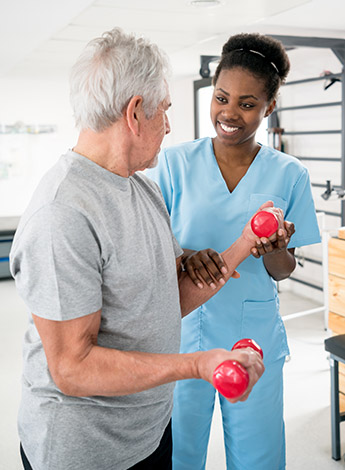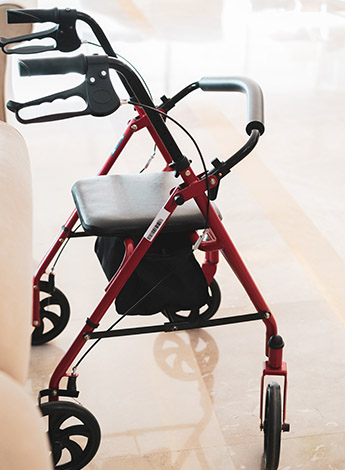
5 Facts about physiotherapy and Huntington’s disease

Kenny Vuong, Tim Sheehy, Paige Hooper, Chris Jones and Dharsha Petrie of the APA Neurology national group present five discussion points about physiotherapy management of Huntington’s disease.
1. Huntington’s disease is not just a hyperkinetic movement disorder
Huntington’s disease (HD) is a genetic neurodegenerative disorder with a typical age of onset in the 30s and 40s.
It has devastating consequences for individuals and their families, with symptoms that include motor disturbances, cognitive impairment and psychiatric disorders.

Although HD is a progressive disorder, the progression is usually relatively slow—patients often live 10–30 years post-diagnosis—and effective, multidisciplinary care that includes physiotherapy can optimise quality of life for patients.
One of the most recognisable features of HD is chorea, which can be described as irregular, involuntary movements that are sudden, brief, unpredictable and non-stereotypical.
It commonly affects the upper and lower limbs and can affect trunk movements.
People with HD present not only with hyperkinetic features, but also with other motor disorders such as bradykinesia, akinesia and dystonia (Vuong et al 2018).
In later stages of the disease, hypokinesia and rigidity are very common (Pagan et al 2017).
Cognitive disturbances and behavioural and psychiatric symptoms are often present early on in the disease and can precede the motor symptoms.
Due to frontal lobe dysfunction, clients with HD often lack insight into their symptoms and impairments and thus family members and support networks are crucial for important decision-making about ongoing care.
2. Exercise can stabilise motor function in people with HD
People with HD are weaker, walk less and fall more (Dawes et al 2015).

While studies are limited, it is reported that people with HD have reduced work capacity and lower limb muscle strength (Busse et al 2008), leading to a reduced ability to perform aerobic exercise with increased lactate synthesis during intense physical exercise (Ciammola et al 2011).
Although clinical muscle weakness isn’t always detected when a person has received an early diagnosis of HD, there are subclinical features indicating its presence, including myopathic changes on biopsy and biochemical evidence of mitochondrial dysfunction (Busse et al 2008).
Prescribing exercise is safe, feasible and effective in individuals with HD (Quinn et al 2020).
There is a strong recommendation that physiotherapists should prescribe aerobic exercise (moderate intensity, 55–90 per cent maximum heart rate) paired with upper and lower body strengthening three times per week for a minimum of 12 weeks to improve fitness and to stabilise or improve motor function (Quinn et al 2020).
When creating and delivering exercise programs, the physiotherapist should consider potential barriers and what form of exercise will maximise engagement for the patient.
Group therapy, one-to-one programs and participating in sports or other areas of interest are all examples of different ways patients might gain the most benefit.
3. Gait training and respiratory management are vital for HD patients
Physiotherapists who work with clients who have HD in the community, in residential settings or in acute care environments should consider how physiotherapy can optimise a client’s overall function most effectively.
Mobility and respiratory management are two key areas in which the physiotherapist should be involved.

Supervised one-to-one gait retraining for people with HD is strongly recommended to improve gait (Quinn et al 2020).
Gait retraining can be part of a holistic training program that includes balance and strength to improve walking speed (Khalil et al 2013).
Commonly used outcome measures for gait include the 10-metre walk test and the Timed Up and Go test.
According to Shah et al (2021), ‘The most common cause of death for HD patients is pneumonia’. As part of a multidisciplinary team and working closely with a speech pathologist, physiotherapists are involved in secretion and choking management throughout the course of the disease.
Physiotherapists should prioritise seating and postural management in relation to head control and required equipment, particularly at mealtimes.
In conjunction with the multidisciplinary team, physiotherapists should encourage good oral hygiene twice a day (Lim 2018) and family, carers and support workers should be trained to manage choking incidents (Kalkers et al 2022).
4. Assistive technology and mobility aid prescription for patients with HD should be considered carefully
Mobility aids and assistive technology can improve the quality of life of patients with HD.
However, there are aspects that need to be taken into account, including cognition and behavioural symptoms, when physiotherapists are prescribing equipment.

The equipment must be individualised to the client’s needs, goals, living situation, home or community environment and anthropometric measurements and its cost-effectiveness must be considered for its anticipated length of use.
Assistive technologies that should be considered are personal alarm fall detection devices, electric recliner chairs, mobile commodes, electric beds, cognitive function devices, adapted cutlery and utensils, and pressure-relieving mattresses and cushions.
These should be discussed within the multidisciplinary team and it is highly recommended that an occupational therapist assess the home environment at an early stage to explore any necessary modifications.
People may not need mobility devices in the early stages of HD but as the disease progresses, more supportive devices may be required.
Mid-stage HD patients will commonly use four-wheeled walkers, while in late-stage HD, patients may benefit from tilt-in-space manual wheelchairs and transfer devices.
HD-specific equipment (such as beds and recliner chairs) has been developed to support mid to later stage HD. It is essential that all equipment is trialled within the individual’s environments to ensure its appropriateness.
5. Physical and cognitive factors are associated with falls in HD
Falls are a source of major morbidity and mortality in HD and a predictor of nursing home placement (Zarowitz et al 2014).
They have been associated with physical factors such as reduced gait speed (Busse et al 2009) and increased gait variability (Grimbergen et al 2008).

However, non-motor factors such as reduced cognition (Grimbergen et al 2008) and poor dual-tasking ability (Fritz et al 2016) have also been associated with falls.
Falls programs should consider how motor, behavioural, cognitive and psychiatric HD symptoms contribute to falls risk and how best to manage each component.
A multidisciplinary approach that responds to the needs of the patient and their family and carers can provide optimal outcomes.
Physiotherapists need to work closely with other team members, particularly in the later stages of the disease, to manage falls and reduce falls risk.
While injury prevention strategies such as the use of helmets and hip protectors may be beneficial, psychiatric symptoms also need to be taken into consideration.
In addition to reduced insight into their limitations, people with HD may have difficulty learning to safely use walking aids in later stages.
A balance needs to be found for each individual patient—mitigating risk without escalating behavioural symptoms.
Click here for an infographic poster version of this article.
>> Kenny Vuong APAM is the chair of the New South Wales branch of the APA Neurology group and a PhD candidate investigating falls and rehabilitation in Huntington’s disease. Kenny has extensive clinical experience providing rehabilitation for people with HD and support for their carers and families.
>> Tim Sheehy APAM is a senior physiotherapist and a Huntington’s disease clinician working at Calvary Health Care Bethlehem in the Statewide Progressive Neurological Disease Service. Tim has a special interest in progressive neurological conditions such as HD, motor neurone disease and atypical Parkinsonism.
>> Paige Hooper APAM MACP is an APA Neurological Physiotherapist and an assistant professor in physiotherapy at Bond University. Paige provides rehabilitation and management for clients with long-term neurological conditions at Gold Coast clinic Neuro Junction.
>> Chris Jones APAM is a senior physiotherapist at Neuro Junction. Chris also works with patients who have HD in a community setting and has significant experience in this area.
>> Dharsha Petrie APAM MACP is an APA Neurological Physiotherapist and an Advanced Physiotherapist at the Surgical, Treatment and Rehabilitation Service in Brisbane, with an interest in neurological rehabilitation including stroke, traumatic brain injury and movement disorders. Dharsha is the national chair of the APA Neurology group.
- References
-
1. Vuong K, Canning CG, Menant JC, Loy CT. Gait, balance, and falls in Huntington disease. Handb 2018; 159: 251-60.
2. Busse, M. E., Hughes, G., Wiles, C. M., & Rosser, A. E. (2008). Use of hand-held dynamometry in the evaluation of lower limb muscle strength in people with Huntington’s disease. Journal of Neurology, 255(10), 1534–1540. https://doi.org/10.1007/s00415-008-0964-x
3. Ciammola, A., Sassone, J., Sciacco, M., Mencacci, N. E., Ripolone, M., Bizzi, C., Colciago, C., Moggio, M., Parati, G., Silani, V., & Malfatto, G. (2011). Low anaerobic threshold and increased skeletal muscle lactate production in subjects with Huntington's disease. Movement Disorders, 26(1), 130–137. https://doi.org/10.1002/mds.23258
4. Dawes, H., Collett, J., Debono, K., Quinn, L., Jones, K., Kelson, M., Simpson, S., Playle, R., Backx, K., Wasley, D., Nemeth, A., Rosser, A., Izardi, H., & Busse, M. (2015). Exercise testing and training in people with Huntington’s disease. Clinical Rehabilitation, 29(2), 196–206. https://doi.org/10.1177/0269215514540921
5. Quinn, L., Kegelmeyer, D., Kloos, A., Rao, A. K., Busse, M., & Fritz, N. E. (2020). Clinical recommendations to guide physical therapy practice for Huntington disease. Neurology, 94(5), 217–228. https://doi.org/10.1212/WNL.0000000000008887
6. Khalil H, Quinn L, van Deursen R, et al. What effect does a structured home-based exercise programme have on people with Huntington's disease? A randomized, controlled pilot study. Clinical Rehabilitation 2013; 27(7): 646-58.
7. Zarowitz BJ, O'Shea T, Nance M. Clinical, demographic, and pharmacologic features of nursing home residents with Huntington's disease. J Am Med Dir Assoc 2014; 15(6): 423-8
8. Busse ME, Wiles CM, Rosser AE. Mobility and falls in people with Huntington's disease. J Neurol Neurosurg Psychiatry 2009; 80(1): 88-90.
9. Grimbergen YA, Knol MJ, Bloem BR, Kremer BP, Roos RA, Munneke M. Falls and gait disturbances in Huntington's disease. Movement Disorders 2008; 23(7): 970-6.
10. Fritz NE, Hamana K, Kelson M, Rosser A, Busse M, Quinn L. Motor-cognitive dual-task deficits in individuals with early-mid stage Huntington disease. Gait & Posture 2016; 49: 283-9.
11. Ajiitkumar A and De Jesus O (2023) Huntington Disease - StatPearls - NCBI Bookshelf (nih.gov)
12. Shah R, Lee S, Strasser R, Grossman C. An Australian Neuro-Palliative perspective on Hungtington’s disease: a case report. BMV Palliative Care 2021 20:53
13. Reyes A, Cruickshank T, Nosaka K, Ziman M. Respiratory muscle training on pulmonary and swallowing function in patients with Huntington’s disease: a pilot randomised controlled trial. Clinical Rehabilitation. 2015;29(10):961-973. doi:10.1177/0269215514564087
14. Pagan F, Torres-Yaghi Y, Altshuler M. The diagnosis and natural history of Huntington disease. Handb Clin Neurol. 2017;144:63-67.
15. Atkins K, Friel C, Andrews S, Chong T, Stout J, Quinn L. (2022). A qualitative examination of apathy and physical activity in Huntington's and Parkinson's disease. Neurodegenerative Disease Management. 12.
16. Lim, Mathew. (2018). Basic oral care for patients with dysphagia - A Special Needs Dentistry perspective.
17. Kalkers, K., Schols, J.M.G.A., van Zwet, E.W. et al. Dysphagia, Fear of Choking and Preventive Measures in Patients with Huntington’s Disease: The Perspectives of Patients and Caregivers in Long-Term Care. J Nutr Health Aging 26, 332–338 (2022).
© Copyright 2024 by Australian Physiotherapy Association. All rights reserved.





